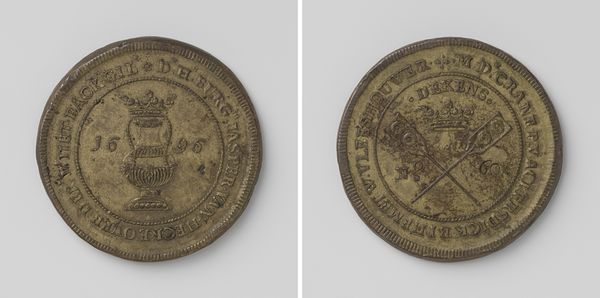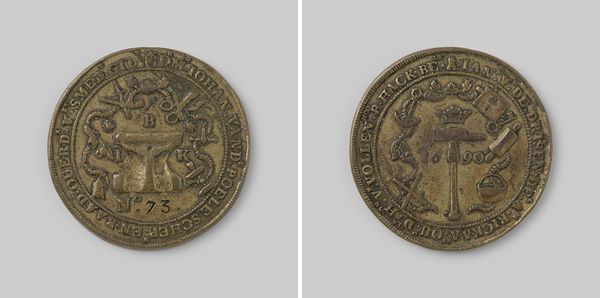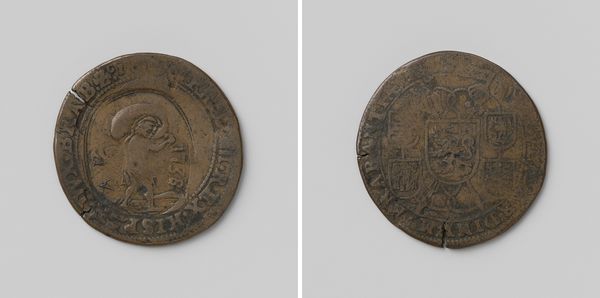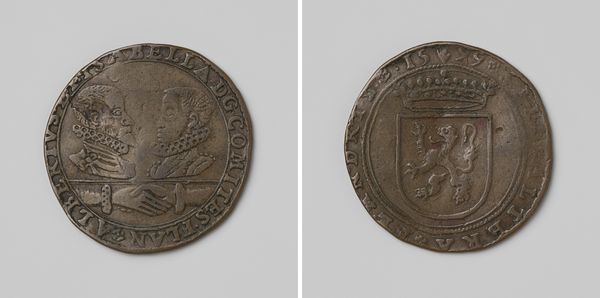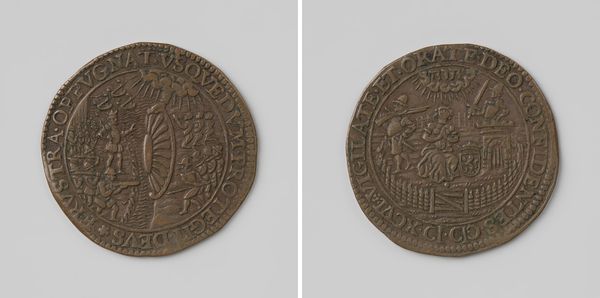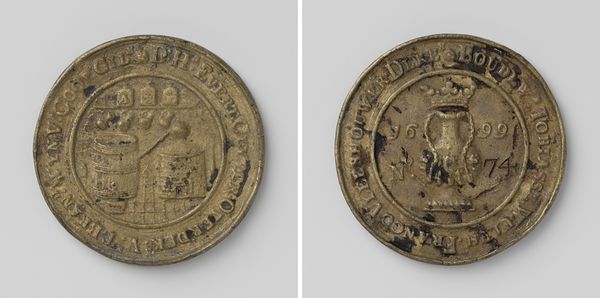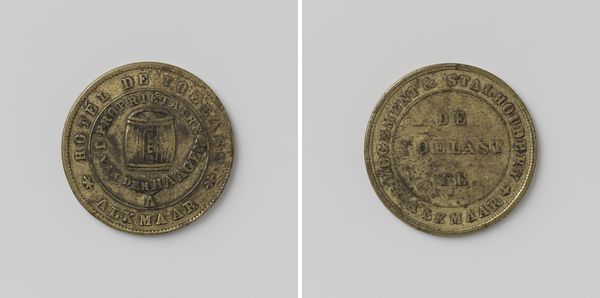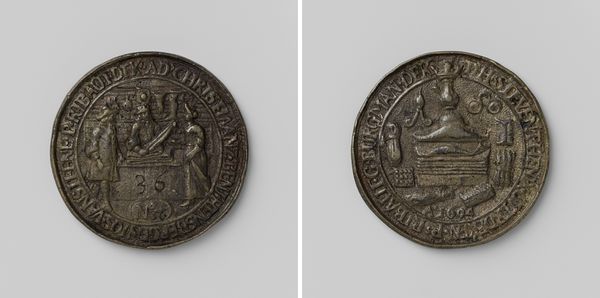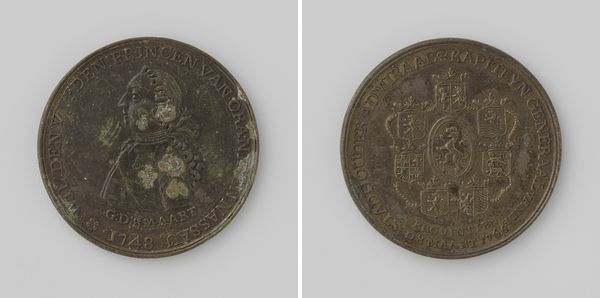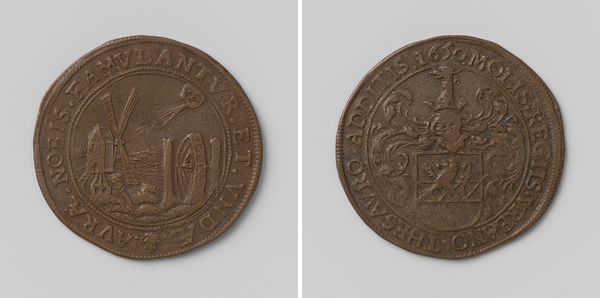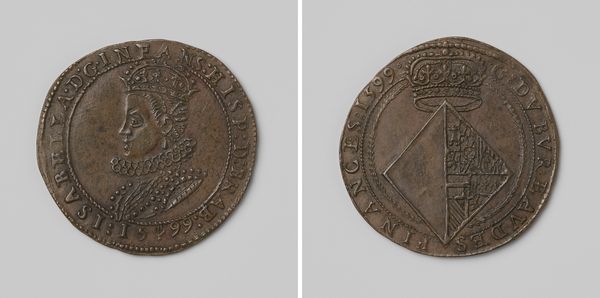
metal, engraving
#
baroque
#
dutch-golden-age
#
metal
#
ceramic
#
engraving
Dimensions: diameter 4.2 cm, weight 27.32 gr
Copyright: Rijks Museum: Open Domain
Editor: Here we have an engraving, a guild token to be exact, titled "Bakkersgilde van Vlissingen, gildepenning met no. 28", crafted in 1696 by an anonymous artist. It appears to be metal, probably bronze, and is quite small. It shows a crown above different symbols, though it is worn and faded from age. What story can you unpack from this piece? Curator: Well, right away, it speaks to the powerful role guilds played in 17th-century Dutch society. These weren't just social clubs; they were powerful economic and political institutions regulating trade, setting standards, and protecting the interests of their members. Editor: So, membership meant something beyond just camaraderie? Curator: Exactly. A token like this, carried by a member, signified their standing within the guild. Consider how this piece publicly reinforced the baker’s role and status. It suggests something about who has economic and social power at the time. Do you notice any symbols that tell you something more? Editor: I see what looks like crossed paddles under the crown on one side and an urn-shaped container on the other. Curator: Good eye! The crown speaks to a level of prestige or perhaps even a tie to local government through regulation, whereas the paddles and urn are likely related to activities or skills connected to the baker's profession in the region. Given that it is the Bakkersgilde (Baker's Guild), these emblems possibly relate to how resources were moved or equipment used at the time. But you know, understanding why ‘number 28’ was given a token at this moment – that takes deeper investigation of Vlissingen’s civic history. Editor: That makes me realize how seemingly simple objects can offer complex insights into the dynamics of the period. This coin-like object becomes like a social document from its time. Curator: Precisely! It pushes us to look beyond the image itself and consider the wider context of 17th-century Dutch society and civic history, it truly becomes something like a political statement from the guild to its public.
Comments
No comments
Be the first to comment and join the conversation on the ultimate creative platform.
